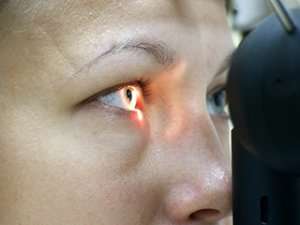


How To Protect Your Eyes While Wearing Halloween-Themed Contact Lenses
Are Halloween-Themed Contact Lenses Safe? Colorful contact lenses definitely add a little extra flair to your costume if you’re planning to be a zombie, vampire or other fictional creature for Halloween. Unfortunately, wearing over-the-counter lenses for just...
Presbyopia
As we age, our eyes—like the rest of our bodies—begin to lose flexibility and strength. When this happens to the lens of the eye and its surrounding muscles, your lens will become stiff. This makes it harder to see close objects clearly because the eyes can’t...
Fuchs’ Corneal Dystrophy
Fuchs’ dystrophy (pronounced fooks DIS-truh-fee) is an eye disease characterized by degenerative changes to the cornea’s innermost layer of cells. The cause for Fuchs’ dystrophy is not fully understood. If your mother or father has the disease, then there...
Patches
Eye patches are used to strengthen muscle control in weak eyes. By placing a patch over the strong eye, the weaker eye is forced to do the heavy lifting. While it may be uncomfortable for the patient at first, the muscle controlling the weaker eye will become tougher...


